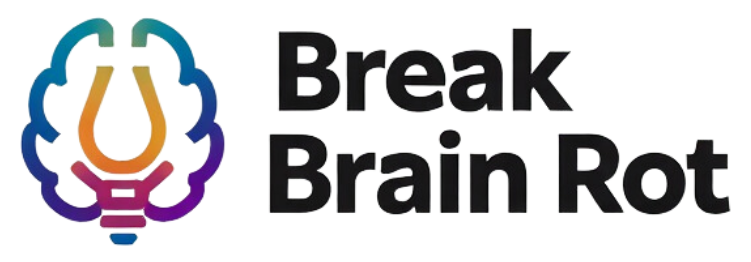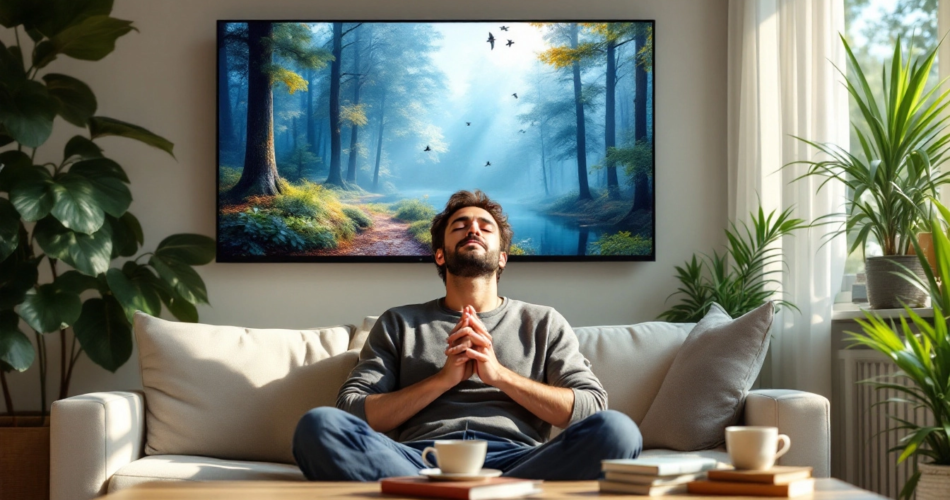In today’s digital age, screens are everywhere—our phones, computers, televisions, and even wearable devices. While technology offers convenience and connectivity, excessive screen time comes with significant downsides, including brain fog, reduced focus, and fatigue. If you’ve been searching for ways to break free from nonstop screen exposure, you’ve come to the right place. In this guide, we’ll dive deep into how to reduce screen time effectively and explore actionable strategies to improve your mental clarity, productivity, and overall sense of well-being.
Table of Contents
- Why Reducing Screen Time Matters
- How to Identify Your Screen Time Triggers
- Practical Strategies to Reduce Screen Time Effectively
- Establishing Healthy Screen Habits for the Long-Term
- Tools and Resources to Help Optimize Screen Time
- FAQs
- Conclusion
Why Reducing Screen Time Matters
The negative impact of screen time on brain health
Prolonged screen use can lead to detrimental effects on brain health, including reduced attention spans and memory impairment. Brain fog, characterized by mental fatigue and lack of focus, is often linked to excessive exposure to blue light and continuous digital engagement. A Harvard study even highlights the connection between high screen time and mental health concerns such as anxiety and depression.
Benefits of reducing screen use
Cutting back on screen time can restore balance to your life, leading to improved focus, better sleep quality, and lower stress levels. Limiting screen exposure creates opportunities to strengthen personal relationships, pursue hobbies, and engage more with the world around you.
How much screen time is too much?
The average adult spends over seven hours a day on screens, far exceeding the recommended daily limits of two hours for recreational use. Overexposure negatively impacts cognitive and emotional health, especially for children. Learn more about the effects of overusing screens in our comprehensive guide, What Too Much Screen Time Does to Your Brain.
How to Identify Your Screen Time Triggers
Recognizing patterns of excessive screen use
Awareness is the first step. Track your daily screen time using built-in tools like Apple’s “Screen Time” or Android’s “Digital Wellbeing.” Look for patterns—when do you spend the most time on your devices, and why? Often, boredom, stress, or habitual checking of devices are key culprits.
Common culprits behind increased screen usage
Social media apps and video streaming platforms are designed to keep you hooked. Work or study-related screen usage can also spill into leisure, creating a cycle of excessive screen exposure.
The role of notifications in extending screen time
Constant notifications act as distractions, pulling your attention back to devices unnecessarily. These interruptions not only harm productivity but also extend overall screen time. You can learn how to manage these distractions with our helpful guide on How to Manage Notifications and Increase Productivity.
Practical Strategies to Reduce Screen Time Effectively
Setting boundaries and device-free zones
Create areas in your home, such as the dining room or bedroom, where screens are off-limits. Similarly, implement no-screen rules during meals or the hour leading up to bedtime for better sleep hygiene.
Using apps and digital tools to set limits
Apps like Apple’s “Screen Time,” Android’s “Digital Wellbeing,” or dedicated tools such as Freedom and StayFocusd can monitor and restrict your screen usage. Explore our curated list of the Best Apps to Help Reduce Screen Time to find one that suits your needs.
Prioritizing offline activities
Find joy in offline hobbies like reading, gardening, or crafting. Engage in physical activities like yoga, jogging, or nature walks to refresh your mind and body. Prioritizing face-to-face interactions with family and friends can also deepen relationships and reduce screen dependency.
Establishing Healthy Screen Habits for the Long-Term
Creating a screen-time routine
Set intentional periods for device use rather than sporadically checking them throughout the day. Employ timers or habit trackers to maintain consistency, which helps solidify healthier patterns.
Teaching kids and teens about mindful screen usage
Children and teens often mimic adult behavior. Practice what you preach by modeling healthy screen habits. Use parental controls to limit their exposure and encourage outdoor activities or creative projects. For more on this, read our guide, How to Teach Responsible Technology Use to Children.
Accountability partners and group challenges
Join a support community or undertake screen-free challenges with family and friends. Encouragement and shared goals make it easier to stay motivated.
Tools and Resources to Help Optimize Screen Time
Blue light-blocking tools and ergonomic setups
Blue light glasses and screen protectors can reduce eye strain caused by prolonged device use. Combine these with ergonomic setups to maintain proper posture and minimize physical fatigue.
Utilizing focus tools to combat distractions
Enable “Do Not Disturb” modes on your devices. Explore productivity apps such as Freedom, FocusMe, or the Pomodoro Technique to help you stay on task without succumbing to digital distractions.
Leveraging time management apps
Apps like RescueTime and Toggl help you monitor workflows more efficiently, revealing opportunities to streamline work and spend less time on screens.
Frequently Asked Questions
How can I reduce screen time while still staying productive?
Adopt productivity tools like website blockers and time trackers to focus on tasks without unnecessary distractions. Set specific goals for work sessions to remain efficient.
What are some signs that I’m spending too much time on screens?
Symptoms include mental fog, eye strain, headaches, disrupted sleep, and increased irritability. Pay attention to these red flags to know when to cut back.
Are there long-term implications for excessive screen use on mental health?
Yes, prolonged screen use has been linked to anxiety, depression, reduced cognitive function, and poor attention spans. Adopting healthier habits early can mitigate risks.
What are simple ways to start reducing screen time?
Begin by setting small, manageable goals like implementing device-free zones or reducing notifications. Gradually scale as you get comfortable with the changes.
Can blue light glasses really help reduce screen-related fatigue?
Yes, blue light glasses filter out harmful light, reducing eye strain and improving focus during necessary screen usage.
Conclusion
Reducing screen time isn’t just about using technology less—it’s about using it smarter. By identifying triggers, implementing strategies, and leveraging helpful tools, you can regain control over your habits, stop brain fog in its tracks, and unlock a healthier, more focused mind. Start small, stay consistent, and experience the transformative benefits of intentional screen use today. Ready to get started? Commit to one small change this week and see the difference for yourself!

